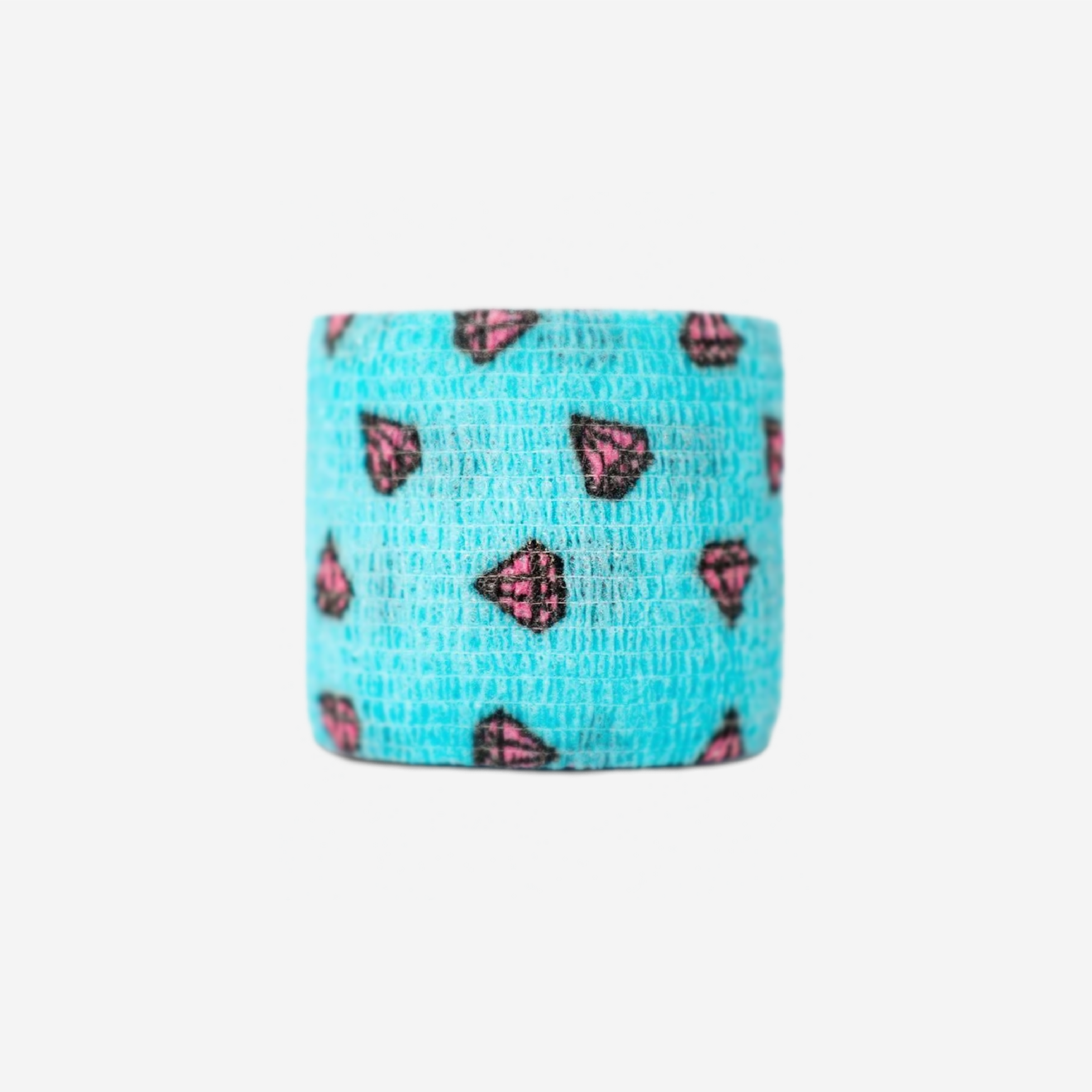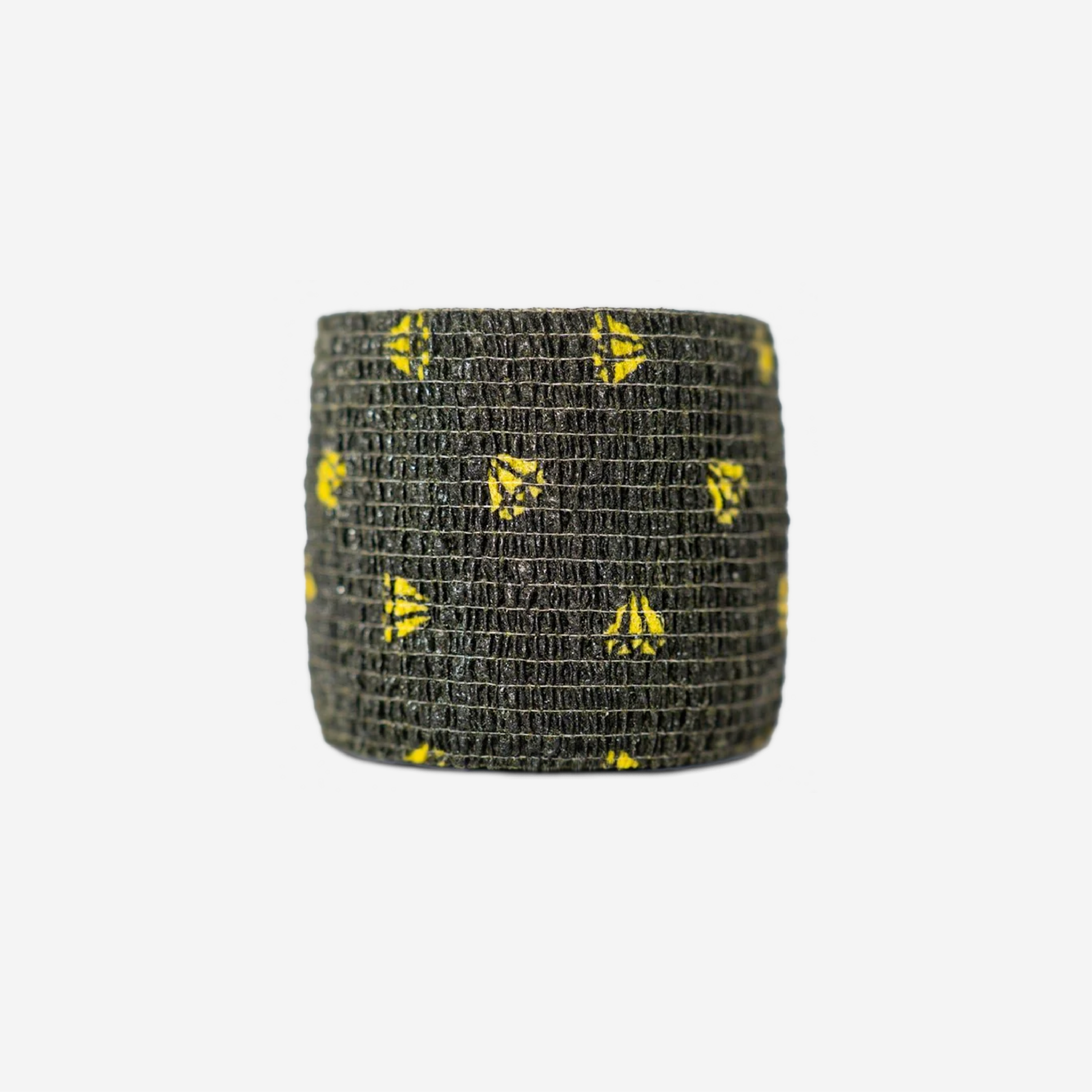On and off the field, athletic tape has gained popularity and become a mainstay in the sports and fitness communities. However, this multipurpose equipment has a vital function for athletes that goes beyond its attractive patterns and fashionable appeal. What makes players wear athletic tape, then? Let's examine the uses and style of athletic tape as well as its rising appeal.
Why Do Athletes Tape Their Joints?
Athletic tape is primarily used by athletes to support and protect their joints. The joints are severely strained by physical activity, particularly high-impact sports. Taping lowers strain, increases stability, and lowers the chance of injury.
For example, in order to avoid sprains and preserve good alignment during strenuous activities, athletes frequently tape their wrists and ankles. Athletic tape serves as a protective barrier against common injuries including ligament rips and joint dislocations by limiting excessive motion.
Additionally, there are ways to apply tape that provide specific support. For instance, kinesiology tape, a breathable and stretchy type, is frequently used to reduce discomfort and encourage blood flow. Taping your joints can improve performance and confidence whether you're a gymnast, weightlifter, or sprinter.
For example, in order to avoid sprains and preserve good alignment during strenuous activities, athletes frequently tape their wrists and ankles. Athletic tape serves as a protective barrier against common injuries including ligament rips and joint dislocations by limiting excessive motion.
Additionally, there are ways to apply tape that provide specific support. For instance, kinesiology tape, a breathable and stretchy type, is frequently used to reduce discomfort and encourage blood flow. Taping your joints can improve performance and confidence whether you're a gymnast, weightlifter, or sprinter.
How Does Tape on Athletes' Arms or Legs Help Them?
Athletic tape is primarily used by athletes to support and protect their joints. The joints are severely strained by physical activity, particularly high-impact sports. Taping lowers strain, increases stability, and lowers the chance of injury.
For example, in order to avoid sprains and preserve good alignment during strenuous activities, athletes frequently tape their wrists and ankles. Athletic tape serves as a protective barrier against common injuries including ligament rips and joint dislocations by limiting excessive motion.
Additionally, there are ways to apply tape that provide specific support. For instance, Rena Sports Stretch Tape, a breathable and stretchy type, is frequently used to reduce discomfort and encourage blood flow. Taping your joints can improve performance and confidence whether you're a football, baseball, or soccer player.
For example, in order to avoid sprains and preserve good alignment during strenuous activities, athletes frequently tape their wrists and ankles. Athletic tape serves as a protective barrier against common injuries including ligament rips and joint dislocations by limiting excessive motion.
Additionally, there are ways to apply tape that provide specific support. For instance, Rena Sports Stretch Tape, a breathable and stretchy type, is frequently used to reduce discomfort and encourage blood flow. Taping your joints can improve performance and confidence whether you're a football, baseball, or soccer player.
Why Do Football Players Wear Tape?
Football players regularly tackle, sprint, and block in this high-contact sport. They run the risk of injuries from these activities, which athletic tape can assist control or prevent. Let's examine why football players use athletic tape in more detail:
Football players must be able to shift directions quickly, which strains their ankles and wrists. These areas receive vital support from athletic tape, which lowers the chance of sprains or fractures.
Improved Grip: To ensure they keep hold of the ball even in difficult situations, quarterbacks and receivers frequently apply tape to their fingers or forearms.
Arm Protection: Since turf burns and abrasions are frequent during play, tape applied to the forearms also acts as a barrier to defend against them.
Football players must be able to shift directions quickly, which strains their ankles and wrists. These areas receive vital support from athletic tape, which lowers the chance of sprains or fractures.
Improved Grip: To ensure they keep hold of the ball even in difficult situations, quarterbacks and receivers frequently apply tape to their fingers or forearms.
Arm Protection: Since turf burns and abrasions are frequent during play, tape applied to the forearms also acts as a barrier to defend against them.
Why Do Baseball Players Wear Tape?
Athletic tape has also been adopted by baseball players, who use it for both functional and aesthetic purposes. Tape has multiple uses from the dugout to the diamond:
Batting grasp: Players can lower their chance of slipping during forceful swings by wrapping tape around their hands or wrists to assist them keep a solid grasp on the bat.
Throwing Support: The repetitive throwing actions needed for baseball can put stress on the elbow and shoulder. Applying tape to these regions provides support and relieves strain on overworked muscles.
Finger Protection: To protect their fingertips from the force of fielding ground balls or catching rapid pitches, catchers and infielders frequently tape their fingers.
Batting grasp: Players can lower their chance of slipping during forceful swings by wrapping tape around their hands or wrists to assist them keep a solid grasp on the bat.
Throwing Support: The repetitive throwing actions needed for baseball can put stress on the elbow and shoulder. Applying tape to these regions provides support and relieves strain on overworked muscles.
Finger Protection: To protect their fingertips from the force of fielding ground balls or catching rapid pitches, catchers and infielders frequently tape their fingers.
Fashion Meets Function
It's amazing how athletic tape has evolved from use to style. Originally employed only to improve performance and prevent injuries, it has since developed into a fashion statement. Athletes today may personalize their appearance because to the abundance of colors, patterns, and textures available to them.
For instance, Rena Sports has stylish designs such as bandana pattern, cactus print, and diamond prints. Athletes who like to stand out and create a statement in the gym or on the field will find these fashionable options appealing.
Athletic tape is now a necessary item for athletes of all skill levels due to its unique combination of functionality and style. It's about self-expression and confidence, not just performance.





































